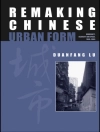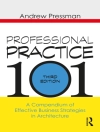Unlike other books on architecture and film, Architecture Filmmaking investigates how the now-expanded field of architecture utilizes the practice of filmmaking (feature/short film, stop motion animation and documentary) or video/moving image in research, teaching and practice, and what the consequences of this interdisciplinary exchange are. While architecture and filmmaking have clearly distinct disciplinary outputs and filmmaking is a much younger art than architecture, the intersection between them is less defined. This book investigates the ways in which architectural researchers, teachers of architecture, their students and practising architects, filmmakers and artists are using filmmaking uniquely in their practice.
表中的内容
Introduction
Part I: Architecture Filmmaking Technique
Architectural Codes in the works of Dan Graham, Bernard Tschumi and Diller and Scofidio – Sarah Breen Lovett
The Depth Between Frames: Architectural Representation in Two Films by Elizabeth Price and Rut Blees Luxemburg – Alexandra Stara
Mysteries of the Visible: Filmic Operations and Their Value for the Representation of Place – Artistic Research in the Moving Image – Fred Truniger
Paris Plays Itself: Widescreen and the City in Tati, Godard and Melville – Douglas Smith
Tracking Spatial Continuity in the Urban Realm – Igea Troiani and Hugh Campbell
Inside History: Filmic Space-time and an Electronics Archaeology – Christine Mc Carthy
Part II: Architecture Filmmakers
Section I
Reimagining Domesticity in 03-FLATS: Single Women and Singapore Public Housing – Lilian Chee
Filming Architecture and the Architecture of Film: A Reading of the Maison de Verre – Mary Vaughan Johnson
Light Matter: The Transdisciplinary Practice of the Architectural Moving Drawing – Eleanor Suess
Section II
Hammer to Bell: A Poetic Documentary about Limerick – Jan Frohburg and Christina Gangos
Invented Memories: Notes on Filming Industrial Ruins in Eleonas, Athens – Ektoras Arkomanis
Errant Bodies: A Critical Essay on the Film More Out of Curiosity – Ronnie Close
Section III
Fight Club: Whether to Make Po Mo Architecture or Blow It Up! – Dik Jarman
His House, Our House and Her House: A Filmic Place for Women – Igea Troiani
Stylist as Auteur: Hierarchy, Reputation and Creative Control – Philip Clarke
Part III: Architecture Filmmaking Pedagogy
Un-framing Reality: Sets of Intensities as Smallest Common Denominator in Film and Architecture – Marc Boumeester
From Blockbuster to Any Space: A Pedagogy of the Filmic Imaginary – Randall Teal
Deeper into Projection: Spatiotemporal Design Inquiry through Digital and Computational Methods – Thomas Forget
Resonance and Transcendence of a Bodily Presence: How a Filmic Mapping of Non-visual, Aural and Bodily Relations in Space Can Strengthen the Sensory Dimension in Architectural Design – Rikke Munck Petersen and Mads Farsø
Cinematic Collage as Architectural Design Research – Igea Troiani and Tonia Carless
Cinematics in Architectural Practice and Culture: The Cambridge Project –François Penz and Maureen Thomas
A Postgraduate Student’s Pursuit for the Future of Architecture Filmmaking in Cuba’s Cinematic Heart: No Hay CINE – Edward Gillibrand
关于作者
Igea Troiani is a trained architect, academic and filmmaker who is a professor of architecture at the University of Plymouth. She graduated from the Royal Melbourne Institute of Technology and since 1996 has taught research-led design and history and theory in schools of architecture in Australia, China and the United Kingdom. Igea produces books and publications, buildings, art exhibitions and architectural films as research outputs. Working mostly in academia now she uses exhibitions as a mode of research and dissemination, writes theory as film and makes films on architectural production under her production company Caryatid Films. She is founder and editor-in-chief of the interdisciplinary, award-winning journal Architecture and Culture that publishes exploratory research that is purposively imaginative rigorously speculative, visually and verbally stimulating.












